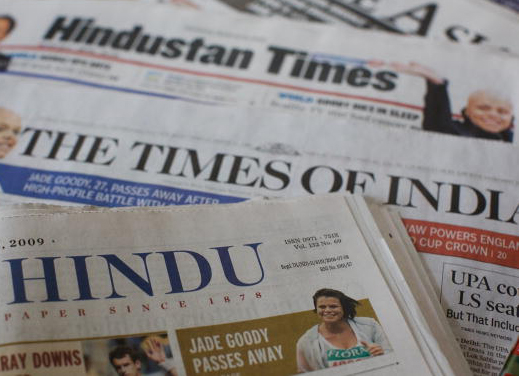
24 SEZ developers seek more time for projects, 3 to quit
As many as 24 special economic zone (SEZ) developers including Dr Reddy's Lab and Tata Consultancy Services have sought more time from the government to execute their projects. The inter-ministerial Board of Approval (BoA) chaired by Commerce Secretary S R Rao will consider these requests at its meeting scheduled for tomorrow. Besides, the board would also take decision on applications of three developers, including Haldia Free Trade Warehousing, who want to surrender their projects. As most of the players have invested some amount in developing the SEZs, Development Commissioners of the respective zones have asked the BoA to give another year for their projects. Pharmaceutical firms including Dr Reddy's Lab, Zydus Technologies and Cadila Healthcare have sought more time to commence production from their SEZ units as they have not been able to obtain the necessary regulatory approvals in time. The special economic zones, which emerged as the major export hub, contribute about 30 per cent in the country's total overseas shipments. However, imposition of minimum alternate tax and dividend distribution tax had impacted the growth of these zones.
(Source: Economic Times)
India for visa liberalisation in Saarc
India on Thursday pitched for further liberalisation of its visa regime within the South Asian Association for Regional Cooperation (Saarc) region to facilitate movement of businessmen, in a bid to increase trade and investment. "I will support enhancement of more SAARC visas so that more businessmen can travel. We also welcome Saarc countries to invest in India," Commerce and Industry Minister Anand Sharma said at the Saarc Business Leaders Conclave in Delhi. Sharma said there is a need to work together for creating a more trustworthy environment which enables easier movement of professionals across borders. He also said there is a need to open bank branches in each other's countries to help traders. Trade and economic ministers of Afghanistan, Bangladesh, Bhutan, Maldives, Nepal, Pakistan and Sri Lanka were present during the function. Sharma also emphasised the need to strengthen infrastructure bottlenecks such as roads, ports and airports to reduce transactions cost and enhance trade within the region. Sharma noted that better infrastructure was the need of the hour, without which transactions cost would not be competitive in the global market.
(Source: Business Standard)
FIIs seen regaining faith in govt bonds in January
After pulling out $14 billion between May and December 2013, foreign institutional investors (FIIs) are returning to the Indian debt market. Soon after the US Federal Reserve announced it intended to taper its stimulus package in May last year, foreign investors began selling Indian bonds, as India’s external condition looked precarious. This sell-off led to the rupee going into a free fall. Between May 21, 2013, and January 1 this year, FIIs have been net sellers of Indian bonds. On May 21, 2013, FII investment in Indian bonds hit a high of $38.52 billion; this fell to $24.95 billion on January 1, 2014. With the currency stabilising and the government getting a grip on the country’s recalcitrant current account deficit, foreign investor interest in Indian bonds has revived. This is true for government, as well as corporate bonds. Since the beginning of this month, net FII investment in the debt market has risen by $2 billion, with fresh inflows into Indian bonds. FIIs claim Indian debt has turned attractive again, as bond yields are high and the forward premia, or hedging cost, has also declined from the highs touched in August. It is expected FIIs will continue to pump money into Indian debt in the coming months. While it is unlikely all the $14 billion will return to Indian debt, some may definitely do so. And, if forward premia falls further, a lot more FII money may come into the Indian debt market.
(Source: Business Standard)
Slow recovery in second half of 2014: Moody's
Moody’s Investors Service said on Thursday that India’s economy is expected to recover slowly from the second half of 2014, provided global economy expands and the outcome of India’s general elections doesn’t affect the country’s economic growth. The comments came two days after the World Bank had projected the global economy to turn the corner and grow 3.2 per cent in 2014 against the estimated 2.4 per cent in 2013. On Wednesday, International Monetary Fund (IMF) managing director Christine Lagarde had said global growth momentum had strengthened in the latter half of 2013, and should strengthen further in 2014, largely due to improvements in advanced economies. If Moody's expectations come true, the wait for a recovery for India's economy will get longer. Policy makers had expected the recovery to start from the second half of FY14. However, there are no signs of it happening for at least the third quarter of the year. Industrial production contracted both in October and November 2013, while exports which grew in double digits for four straight months till October 2013, expanded by a single digit in November and December 2013. Besides, widely-tracked HSBC purchasing managers' index (PMI) for services contracted in all the three months of the third quarter of FY14. India’s economy grew by a decade-low rate of five per cent in 2012-13 and the growth is widely expected to either stick to this level or go even below in 2013-14. The economy expanded 4.6 per cent in the first half of 2013-14, compared to 5.3 per cent in the corresponding period of 2012-13.
(Source: Business Standard)
Economic Section
Royal Thai Embassy















